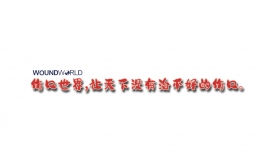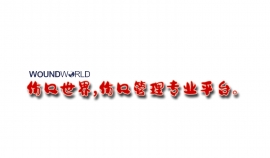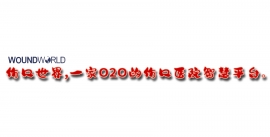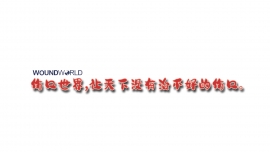文献精选
Background: In some patients, diabetic foot ulcers may heal slowly despite tight control of blood glucose and normal limb circulation, implying the presence of multifactorial, unidentified factors to wound healing. Previous efforts to identify these factors using binary variables, such as amputation or specific healing timelines, inadequately reflect the complexities of wound healing capacity.
Aims: We aimed to identify factors associated with delayed diabetic foot ulcer healing.
Methods: Eight factors were assumed to affect diabetic foot ulcer healing; patient age, age at the onset of diabetes, sex, peripheral arterial disease (PAD), HbA1c, smoking as measured by the Brinkman index (BI), dialysis and bone infection. They were analysed using linear regression and multivariable analysis against three healing indices: total healing period (THP), granulation time (GT) and time to contraction onset (TCO).
Results: PAD and BI correlated positively with all three indices. Patients with PAD exhibited significantly extended THP, GT and TCO. An increase of 100 in BI corresponded with a 1.53 day increase in GT. Conclusion: PAD was associated with delayed healing according to every measure analysed, while BI was linked with slower granulation. Besides THP, the measurements of GT — and possibly TCO — could evaluate some aspects of healing capacity of diabetic ulcers.
Kazufumi Tachi
Senior Lecturer, Division of Plastic Surgery, Tohoku Medical and Pharmaceutical University, Sendai, Japan
Koichi Gonda
Professor, Division of Plastic Surgery, Tohoku Medical and Pharmaceutical University, Sendai, Japan
Takashi Kochi
Chief Surgeon, Department of Plastic Surgery, Sendai City Hospital, Sendai, Japan
Jyunya Niwa
Research Associate, Division of Plastic Surgery, Tohoku Medical and Pharmaceutical University, Sendai, Japan
Key words
Diabetic foot ulcer
New index of wound healing
Brinkman index
Declarations
All authors have no conflicts of interest to declare.
Surgical site infections of post-transplanted heart patients, as well as wound care, have little scientific evidence in Mexico, although adequate treatment in infected wounds with advanced wound dressings or cellulose membranes that allow us to clearly assess the incision can reduce hospital stay, pain, anxiety and the infection itself, together with appropriate antibiotic therapy. The aim of this case report is to describe the management and care of the surgical site infection (Gram-negative bacillus) following a heart transplant that includes the transparent cellulose membrane.
Dalila Diana Bautista Uribe
Nurse Specialised in Wounds, Stomata and Burns, Centro Médico Siglo XXI Cardiología, Mexico City, CDMX, Mexico
Key words
- Surgical site infection
- Bacterial cellulose membrane
- Heart transplant
This article is based on a presentation by Professor Steven Jeffery at the annual Wounds UK conference in Harrogate, on 7 November 2023. Professor Jeffery presented clinical studies on how a bioengineered wound therapy with a porcine urinary bladder matrix (UBM) may facilitate healing of chronic wounds.
Steven LA Jeffery
Medical Director Pioneer Wound Telehealth and Professor of Wound Study, Birmingham City University
John McRobert
Clinical Research Director, Pioneer Wound Telehealth
Key words
- Chronic diabetic wounds
- Urinary bladder matrix
- Macrophages
- Wound healing
- Meeting report
- Wound care services
This meeting report has been funded by an educational grant from Integra
Management, as well as prevention, of wound infection is key in the promotion of the healing process. In India, over one million people are moderately or severely burnt every year, and managing the challenging burn wounds is a daily reality for clinicians in the country. Silver has been used as an antimicrobial in burn wound management for decades and modern advanced dressings can provide safe prevention and management of infection in these cases. This article reports the cases of two adults, an infant and a child with burns, at risk of infection and managed with a Technology Lipido-Colloid non-adherent dressing with silver (TLC-Ag; UrgoTul Ag/Silver). The main benefits observed when using the evaluated dressing in these patients included rapid wound healing but also patient-related outcomes, such as decrease in pain and atraumatic removal.
Dr Venkateswaran
Plastic Surgeon, Jupiter Hospital, Mumbai, India
Dr Ravichander Rao A
Plastic Surgeon, Care Hospital, Hyderabad, India
Dr Krishna Kumar
Plastic, Aesthetics, Burns, Hand and Reconstructive Microsurgeon, Kovai Medical Centre & Hospital, Coimbatore, India
Dr Sankamithra
Consultant Plastic Surgeon, Lakshmi Medical center, Pollachi, India
Key words
- Burns
- Lipido-colloid non-adherent dressing
- Silver
Declarations
All authors have no particular conflicts of interest to declare regarding these cases.




